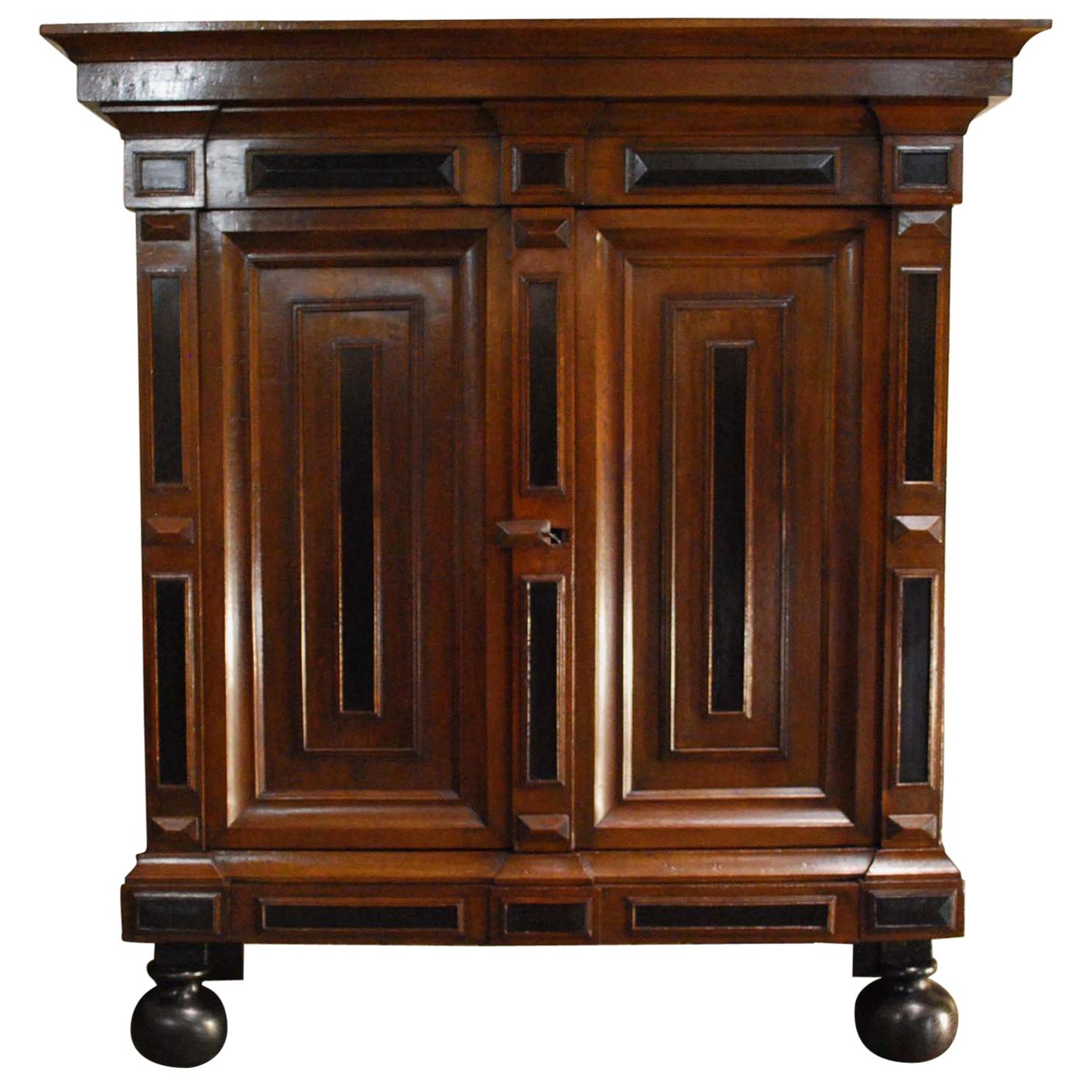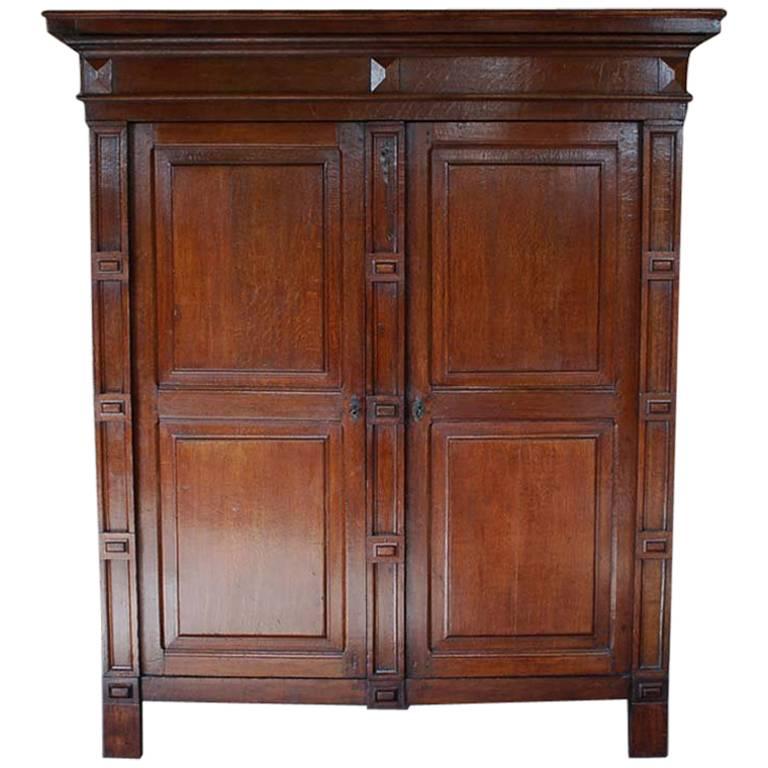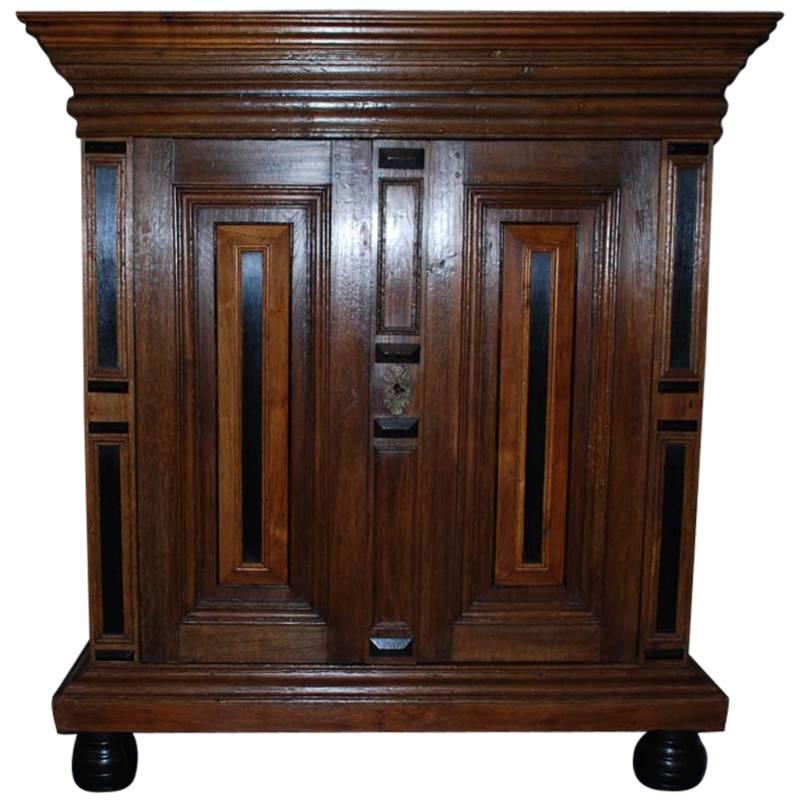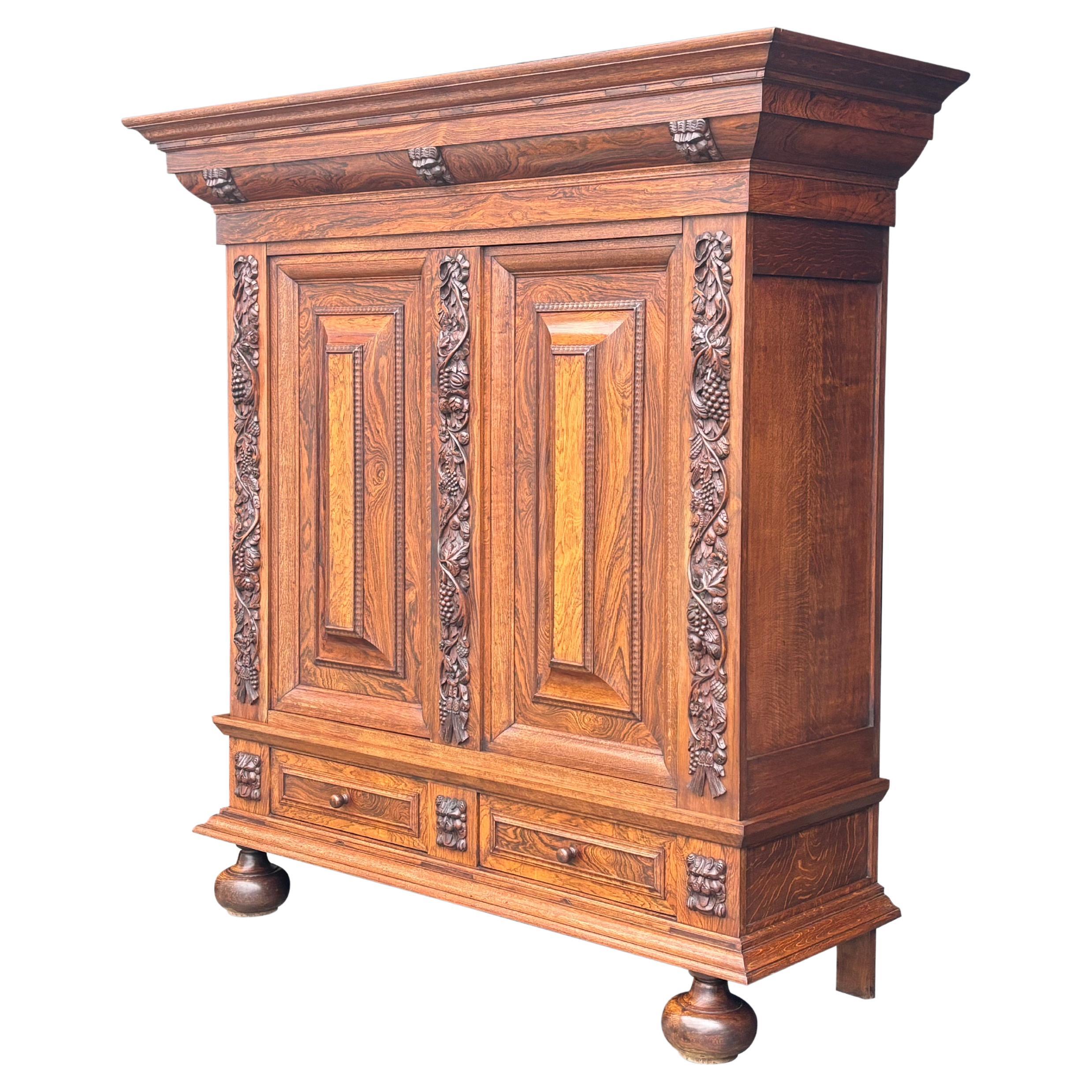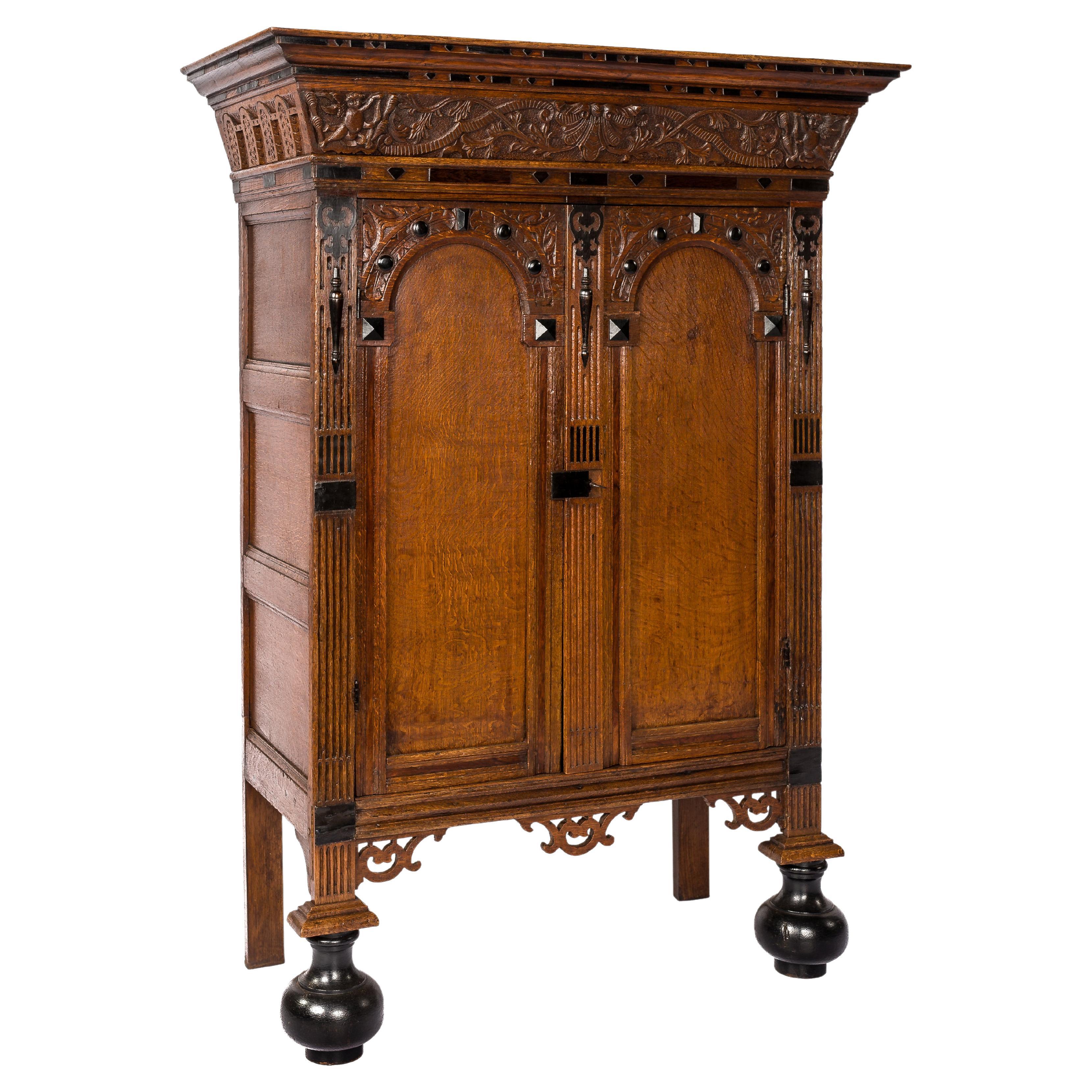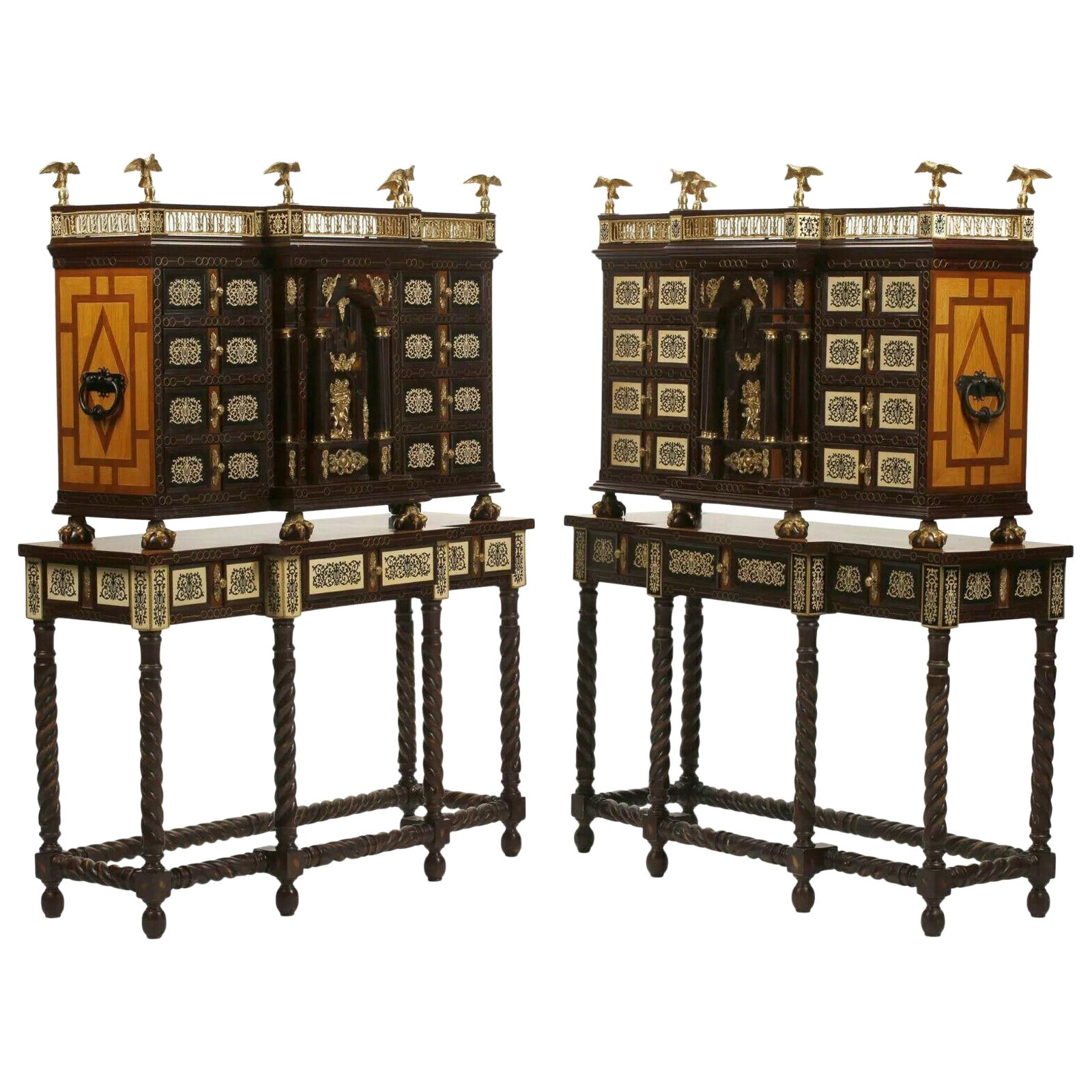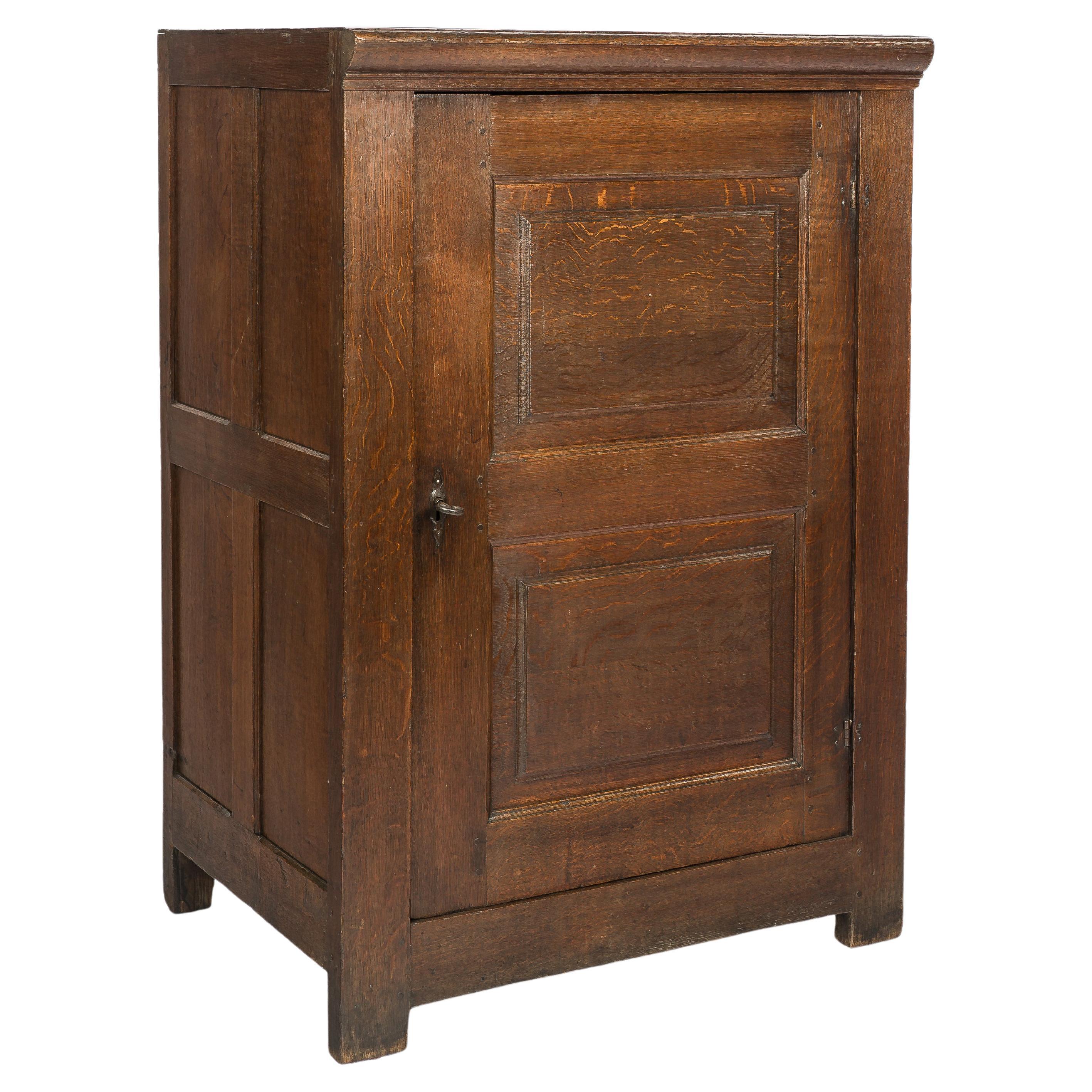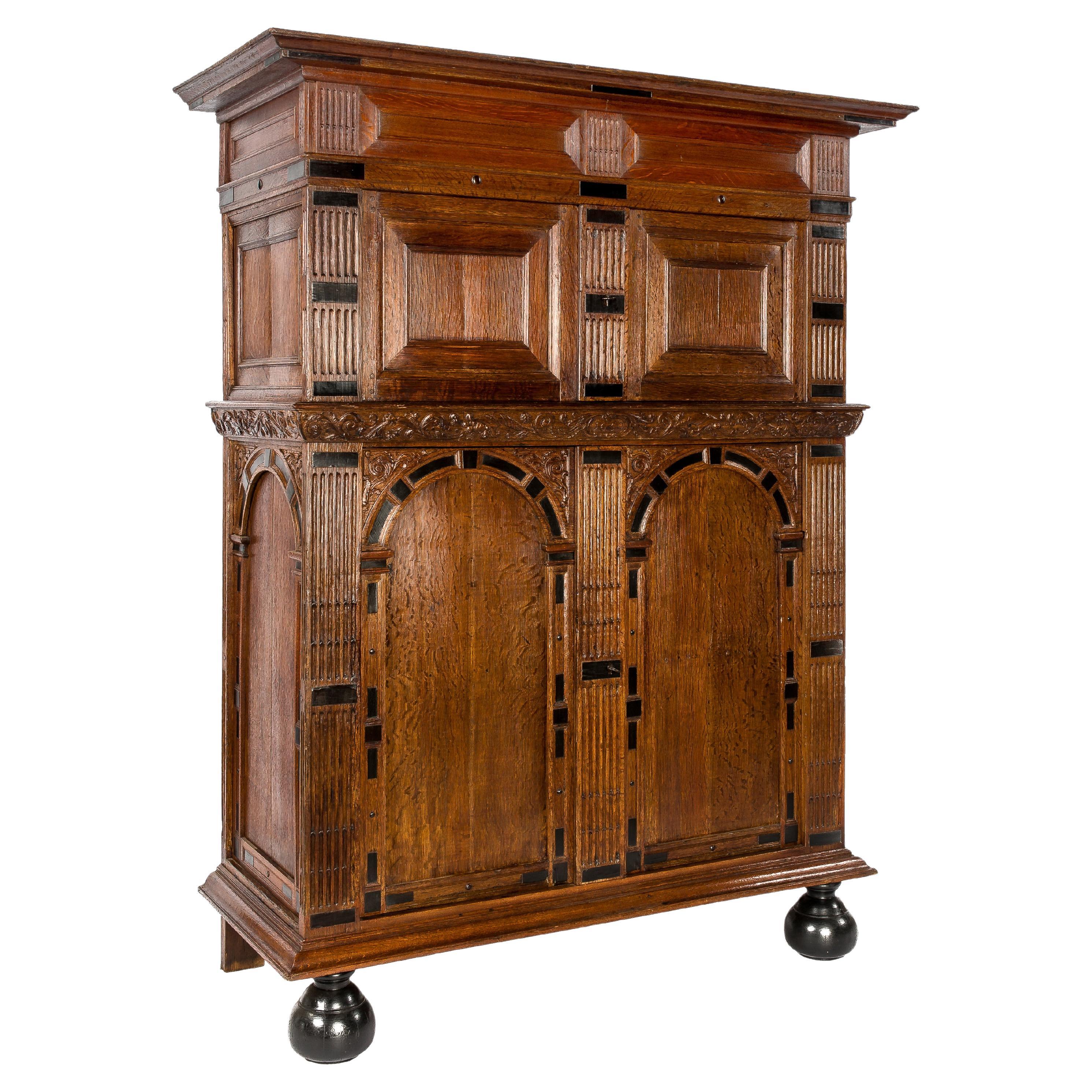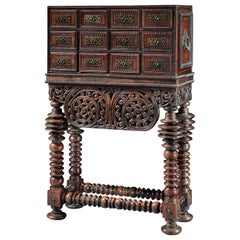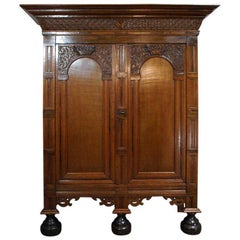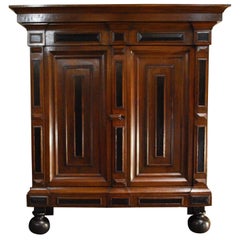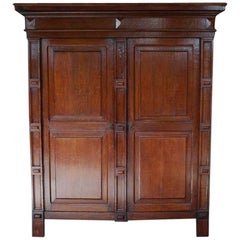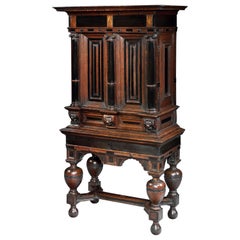
Cabinet on Stand Dutch Renaissance Oak Ebonised Secret Locking Mechanism Key
View Similar Items
Want more images or videos?
Request additional images or videos from the seller
1 of 17
Cabinet on Stand Dutch Renaissance Oak Ebonised Secret Locking Mechanism Key
About the Item
- Dimensions:Height: 68.9 in (175 cm)Width: 36.23 in (92 cm)Depth: 19.69 in (50 cm)
- Style:Renaissance (Of the Period)
- Materials and Techniques:Oak,Joinery
- Place of Origin:
- Period:
- Date of Manufacture:circa 1600-1620
- Condition:Wear consistent with age and use.
- Seller Location:BUNGAY, GB
- Reference Number:1stDibs: LU3867318806682
About the Seller
5.0
Vetted Seller
These experienced sellers undergo a comprehensive evaluation by our team of in-house experts.
Established in 1985
1stDibs seller since 2018
85 sales on 1stDibs
Typical response time: 12 hours
More From This SellerView All
- Writing Cabinet Scrittoio Escritoire Desk Walnut Italy Florence RenaissanceLocated in BUNGAY, SUFFOLKAn exceptionally rare, late-Renaissance, Florentine, walnut, writing cabinet, scrittoio, escritoire or desk in two parts This striking, writing cabinet has a classical form, ornam...Category
Antique Early 1600s Italian Renaissance Cabinets
MaterialsWalnut
- Cassone Venetian 16thc Renaissance Cedar Original Stand Neptune Armorial UnicornLocated in BUNGAY, SUFFOLKA large, museum-quality, late-16th century, cedar, Venetian, cassone on its original stand ; the sea creature ornament probably drawn from De la Cosmographie Universelle, livre III, engraving 1550-1568 • This is the only, known, cassone of this type retaining its original stand. • The collection in Italy that it originally came from was a palazzo that it had reputedly been in for generations of the same family and this most likely why the stand has survived. • The decoration is very unusual, and delightful in the array of sea creatures depicted. The connection of the region with the sea is very strong. • The inner lid is very practical and can be used for display or serving. The interior offers masses of storage space which is particularly suitable for textiles being cedar which repels moths. • The cassone is a beautiful, rich colour and has developed a lustrous patina. • The cassone is Illustrated & discussed in discussed in ‘Woods in British Furniture Making’, (Bowett) c13 Provenance: Private collection, Mayorca. Private collection, Italy Related to: Cassone in V&A collection, no 4886-1858 Width 177 cm., 70 in., Height 87 cm., 34 ½ in. Depth 68 cm. 26 ½ in. With lid open 155 cm., 61 in “Late 16th and 17th century, London inventories confirm that cypress wood chests were relatively common in prosperous households. In 1598 there was a cypress chest in the hall of John Mason, a vintner, valued at 50 shillings. It was the most expensive piece of furniture in the house. Similarly there was a ‘fair cypress chest’ in the great chamber of Adrian Moore, haberdasher, in 1618, and a cypress chest worth £ 9 in the hall of Thomas Willis, a clotherworker in 1630. The chests were sometimes described as ‘great’ or ‘small’ but not otherwise described – presumably they were familiar to the compilers of the inventories. They were placed in halls, chambers and parlours, places where they would have been on prominent view. It is noteworthy that only the chests were imported and not, apparently, the wood. “ (p282, Cypress, Woods in British Furniture making) The decoration is very unusual, and delightful in the array of sea creatures depicted. The connection of the region with the sea is very strong. I have never seen one of these chests on its original stand. The collection in Italy that it came from was a palazzo that it had reputedly been in for generations of the same family and this most likely why the stand has survived. In practical terms, the stand makes the chest a comfortable height to use. The exterior of the chest is a beautiful, mellow colour and has developed a lustrous patina. The top comprises three planks faced with a shallow, cleated, moulded edge nailed on. The front retains its original hasp and lockplate and, as is commonly found, the lock has been removed but, unusually the original ring hinges have survived. The top opens to reveal an inner lid with ring hinges and a brass ring, revealing a large open storage compartment below, the bottom lined with an old fabric. The underside of the lid retains its original penwork and pierced decoration. The central panel depicts sea creatures, sharks, flatfish, monster fish, sea horses, Neptune and mermaids, probably drawn from De la Cosmographie Universelle, livre III, engraving 1550-1568. The panels either side depicting a crown, the sun and unicorns amongst stylised floral sprays. The surrounding naive penwork border features repeats of three naked ladies in the sea, a man wearing an animal mask with two dogs in a forest and a huntsman with two dogs. The floor of the inside of the cassone is upholstered in an 18th century red and yellow striped woven textile the colours of the Catalan flag. The front is decorated with pierced, silhouettes of beasts, trees and figures. The sides are plain with iron carrying handles. On its original stand, with similar decoration, and bearing a cartouche which would have been decorated with the arms of its original owner. Italian, last quarter of the 16th century. Condition Report : Old repair to bottom left moulding of top. Some hairline cracks to top. The hasp, lockplate and ring hinges are original, the lock has been removed. Handles probably 18th century. The inner lid was probably added in the 18th century and supporting mechanism in the 19th century. Exceptional original, lustrous colour and patina. Measures: Width 177 cm. 70 in., height 87 cm. 34 ½ in., depth 68 cm. 26 ½ in. The cassone was the principal piece of furniture in 16th century, Italy. These chests were made as bridal gifts for nobles and aristocrats from cedar specifically for storing their much prized and valued hangings, clothing and linens, as the wood repels moths and the sweet fragrance delicately scents fabrics. Consquently the cassone, as in this example might be decorated with the family coat of arms or with depictions of virtue and edifying episodes from the Bible. A young woman could not be allowed to enter marriage without some instruction. Later, many cassoni were taken apart so that the decorated front panel could be hung as a painting. The stand of this cassone has a cartouche that would have contained a painted coat of arms in the centre which shows that it was conceived for a noble family. Such cypress or cedar chests, incised in bas relief and pyrographically engraved, have long been associated with Venice and typically have a naïve decoration on the exterior. Literature: The 'cypress chests' containing 'arras, counterpoints, costely apparel, tents, and canopies, fine linen, Turkey cushions...Category
Antique 16th Century Italian Renaissance Cabinets
MaterialsCedar
- Contador Cabinet Original Stand Rosewood Vinhático Portuguese Brass TremidosLocated in BUNGAY, SUFFOLKA STRIKING, MUSEUM QUALITY, BAROQUE, PORTUGUESE BRAZILIAN, ROSEWOOD & VINHÁTICO CONTADOR OR CABINET ON STAND WITH BRASS MOUNTS - Masterpiece of carved ornament, with tremidos or flut...Category
Antique 1650s Portuguese Baroque Cabinets
MaterialsBrass
- Cabinet Glazed Bookcase Display Stand Walnut Baroque Antiquarian BarleyLocated in BUNGAY, SUFFOLKUnusual, antiquarian, glazed, display cabinet or bookcase on stand in the Baroque-Style most likely made for a formal interior Beautifully made walnut cabinet piece using finely figu...Category
Antique Early 1900s English Baroque Revival Cabinets
MaterialsWalnut
- Chest of Drawers Chest Commode Architectural Facade Enclosed Renaissance CedarLocated in BUNGAY, SUFFOLKA museum quality, English, Late-Renaissance, cedar enclosed chest of drawers with exceptional snakewood, walnut & oak with an architectural or façade front This is the most sophisticated English model of chest of drawers conceived as a cabinet piece with an architectural front intended to disguise the drawers. This chest exhibits the mastery of English Late-Renaissance, cabinet making combining woods prized for their exoticism, color and beautiful figuring with carving and moulding in different ornamental patterns to simulate materials found within an architectural façade...Category
Antique Early 17th Century European Renaissance Commodes and Chests of D...
MaterialsCedar
- Cabinet Spice Small Oak Cedar Snakewood Fruitwood Cushion Geometric MouldingLocated in BUNGAY, SUFFOLK- Particularly fine example with deep cushion and geometric mouldings. - Atmospheric piece with character - Secret drawers add intrigue A rare mid-17th century oak and cedar spi...Category
Antique 1650s English Baroque Cabinets
MaterialsFruitwood, Oak, Cedar
You May Also Like
- Antique Dutch Renaissance Oak CabinetLocated in Casteren, NLThis extraordinary cabinet is made of the finest oak in the tradition of the Dutch Renaissance during the “Dutch golden age” This cabinet is made in ...Category
Antique Early 18th Century Dutch Renaissance Cabinets
MaterialsOak
- 18th Century Dutch Renaissance Oak CabinetLocated in Casteren, NLA beautiful late 18th century cabinet in the best quality solid oak. This is a typical 'kussenkast' or pillow cabinet. Pillow refers to the shape of the...Category
Antique Late 18th Century Dutch Renaissance Cabinets
MaterialsOak
- Dutch Renaissance CabinetLocated in Casteren, NLRenaissance cabinet made from oakwood. Originates Netherlands, dating circa 1750.Category
Antique Mid-18th Century Dutch Cabinets
MaterialsOak
$9,641 Sale Price20% Off - Late-17th Century, Dutch Oak Cabinet on StandLocated in London, GBDutch oak cabinet on stand An exceptional late 17th-century Dutch oak cabinet-on-stand with an ornately carved interior, depicted in the Baroque man...Category
Antique Late 17th Century Dutch Baroque Cabinets
MaterialsMetal
- 18th Century Dutch Renaissance CabinetLocated in Casteren, NLThis late 18th century cabinet is a so called 'kussenkast' or pillow cabinet. The pillow refers to the shape of the raised panels in the doors. It is a typical Dutch Renaissance cabinet...Category
Antique Mid-18th Century Dutch Renaissance Cabinets
MaterialsOak
- Antique Dutch Renaissance Portal Cabinet in Solid Oak, 18th CenturyLocated in Casteren, NLThis rare Dutch cabinet is made of the finest oak in the tradition of the Dutch Renaissance during the “Dutch golden age” This cabinet is made in t...Category
Antique Mid-18th Century Dutch Renaissance Cabinets
MaterialsOak
Recently Viewed
View AllMore Ways To Browse
Pair Bed Side Cabinets
Ebonized Cabinet On Stand
Antique Door Lock Mechanisms
Renaissance Cabinet Pair
Beautiful Antique Oak Hall Stand
Linen Fold Cabinet
Columnar Cabinet
Asian Cabinet On Stand
Large Antique Linen Press
Antique Sidetable
Antique Sidetables
Pair Linen Press
Flemish Table Cabinet
Pair Double Beds
Lion Ceramic Large
Inlaid Asian Cabinet
J D Inside
Pair Asian Side Cabinets

